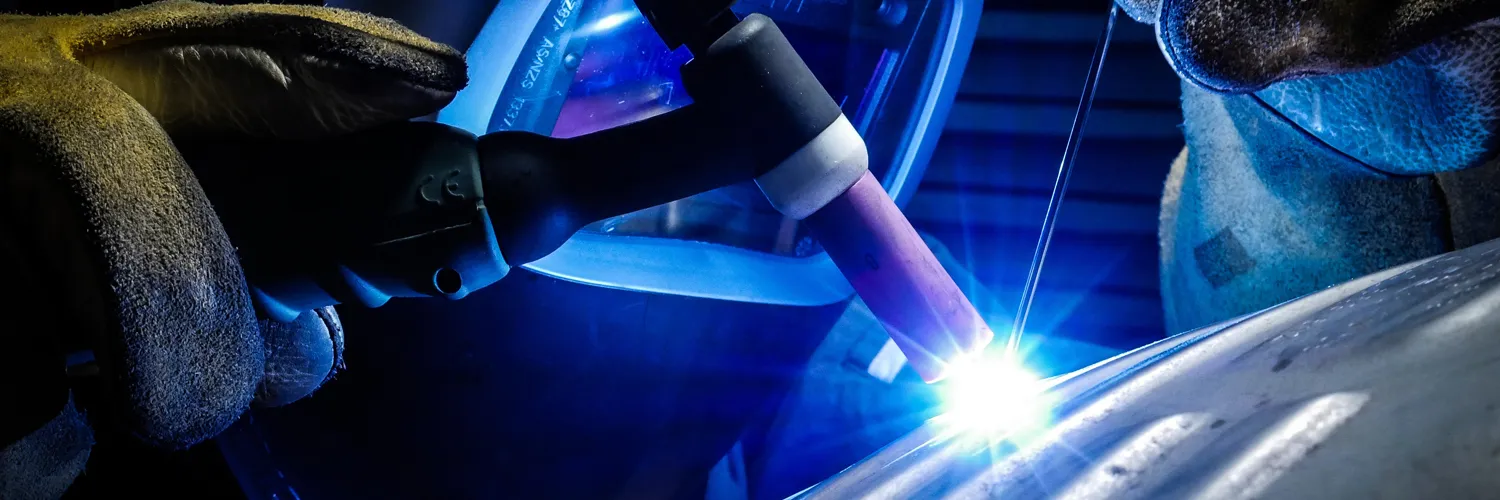Welding Corrosion Passivation, Treatment Chemicals, Oxy Fuel Welding, Manufacturer, Supplier, Exporter, Services Provider, Consultants, Satara, India
Welding is a fabrication or sculptural process that joins materials, usually metals or thermoplastics,
by using high heat to melt the parts together and allowing them to cool causing fusion.
Welding is distinct from lower temperature metal-joining techniques such as brazing and soldering, which do not melt the base metal.
Oxy-fuel welding – also known as oxy-acetylene welding or oxy welding,
Shielded metal arc welding ( SMAW ) – also known as "stick welding" or "electric welding"
Gas tungsten arc welding ( GTAW ) – also known as TIG ( tungsten inert gas )
Gas metal arc welding ( GMAW ) – commonly termed MIG ( metal inert gas )
Flux-cored arc welding ( FCAW ) – MIG welding except it uses a special tubular wire filled with flux;
Submerged arc welding ( SAW ) – uses an automatically fed consumable electrode and a blanket of granular fusible flux.
Electroslag welding ( ESW )
Electric resistance welding ( ERW )
Brazing Corrosion Passivation / Treatment Chemicals
Brazing is a metal-joining process in which two or more metal items are joined together by melting and
flowing a filler metal into the joint having lower melting point than joining surfaces.
Brazing differs from welding in that it does not involve melting the work pieces and from soldering in using higher temperatures i.e. more than 450dC for a similar process, while also requiring much more closely fitted parts than when soldering. The filler metal flows into the gap between close-fitting parts by capillary action.
The filler metal is brought slightly above its melting ( liquids ) temperature while protected by a suitable atmosphere, usually a flux.
It then flows over the base metal ( known as wetting ) and is then cooled to join the work pieces together. A major advantage of brazing is the ability to join the same or different metals with considerable strength.
Types of Brazing are Torch Brazing, Furnace Brazing, Silver Brazing, Braze Welding, Vacuum Brazing, Dip Brazing Etc.
Soldering Corrosion Passivation / Treatment Chemicals
Soldering is a process in which two or more items ( usually metal ) are joined together by melting and putting a filler metal ( solder ) into the joint, the filler metal having a lower melting point than the adjoining metal. Soldering differs from welding in that soldering does not involve melting the work pieces. In brazing, the filler metal melts at a higher temperature less than 450dC, but the work piece metal does not melt. Types of Soldering are active Soldering, stained glass soldering, resistance soldering, mechanical and aluminum soldering, pipe soldering, silver soldering, induction soldering etc.
Casting Corrosion Passivation / Treatment Chemicals
Casting is a process in which a liquid metal is somehow delivered into a mold that contains a hollow shape of the intended shape. The metal is poured into the mold through a hollow channel called a sprue. The metal and mold are then cooled, and the metal part ( the casting ) is extracted.
Forming Corrosion Passivation / Treatment Chemicals
Forming processes are particular manufacturing processes which make use of suitable stresses ( like compression, tension, shear or combined stresses ) which cause deformation of the materials to produce required shapes. During forming processes no material is removed, i.e. they are deformed and displaced.



